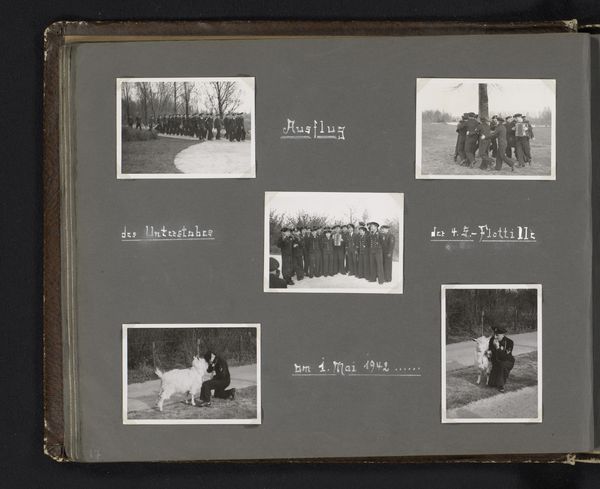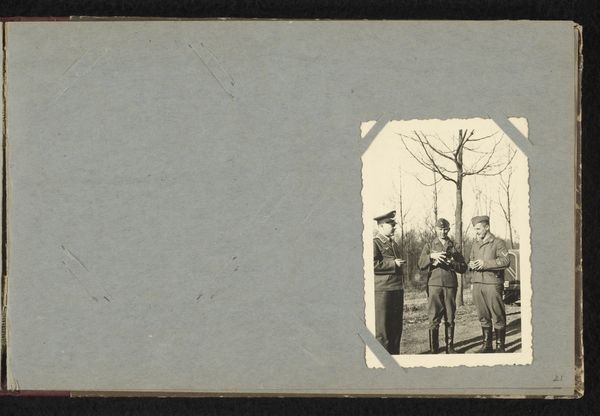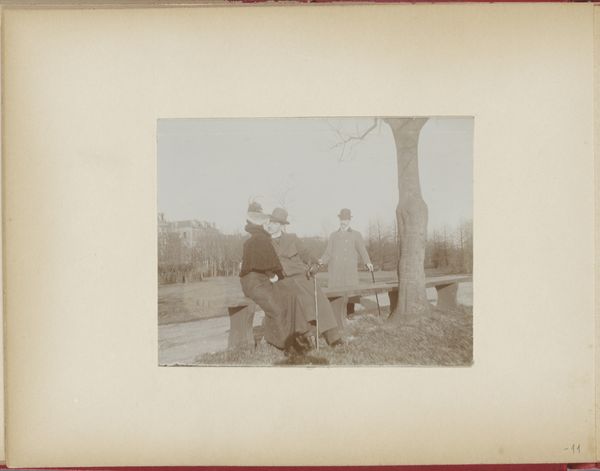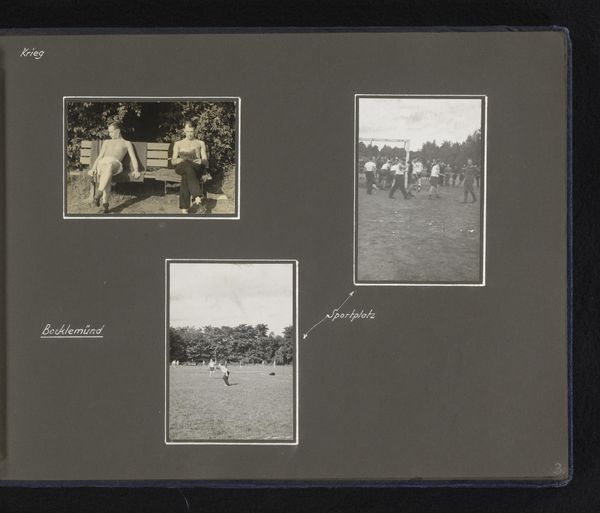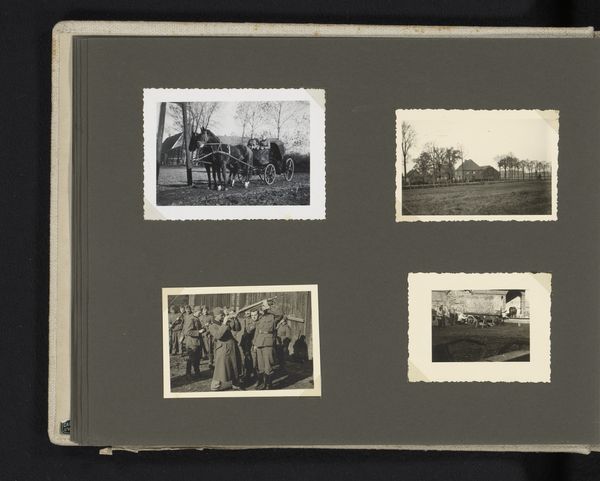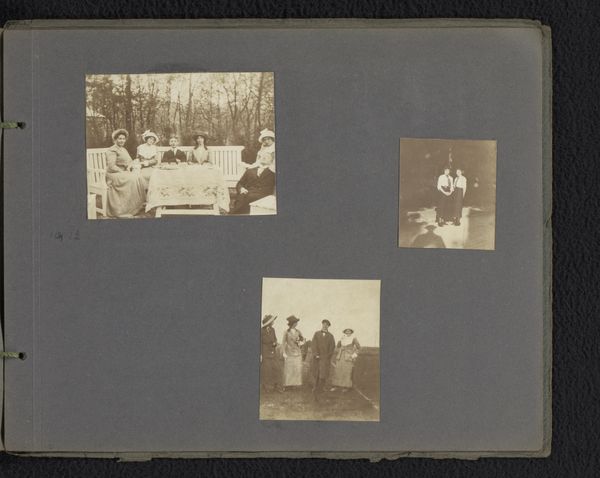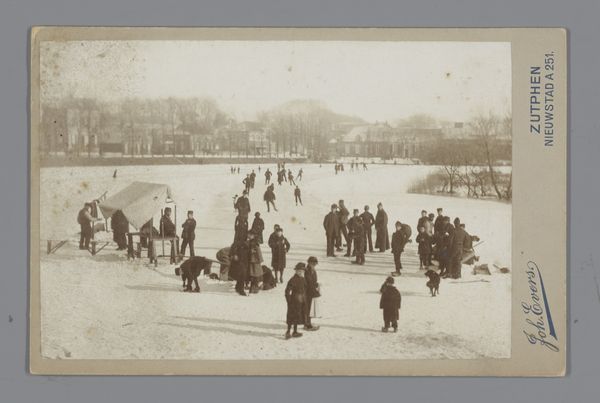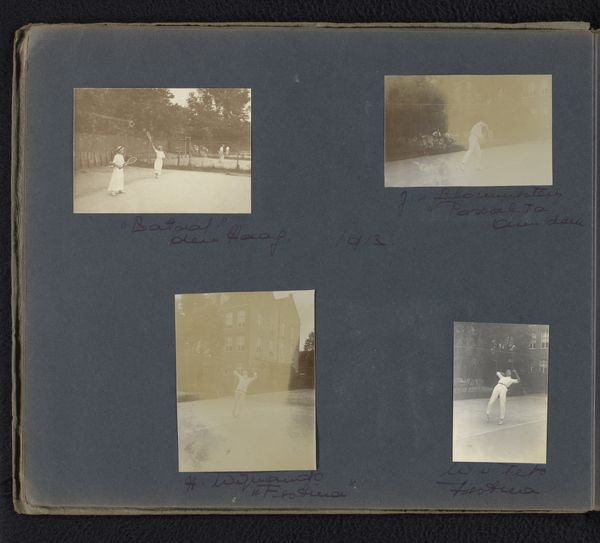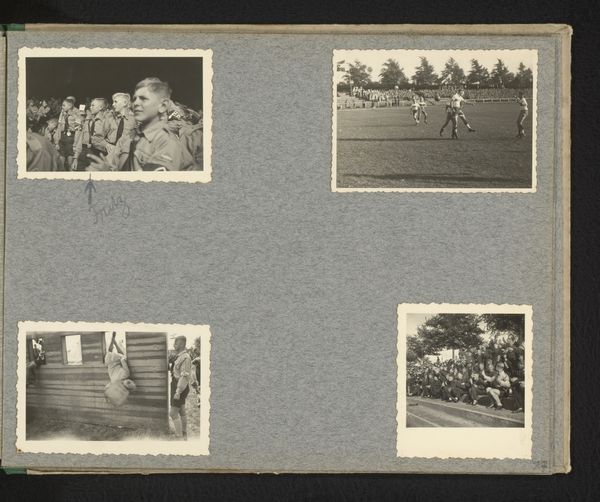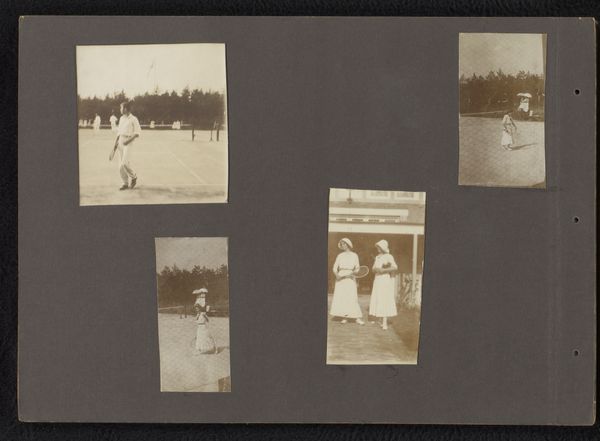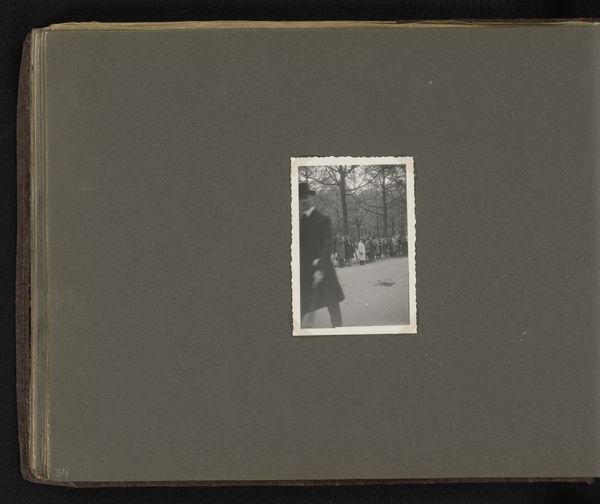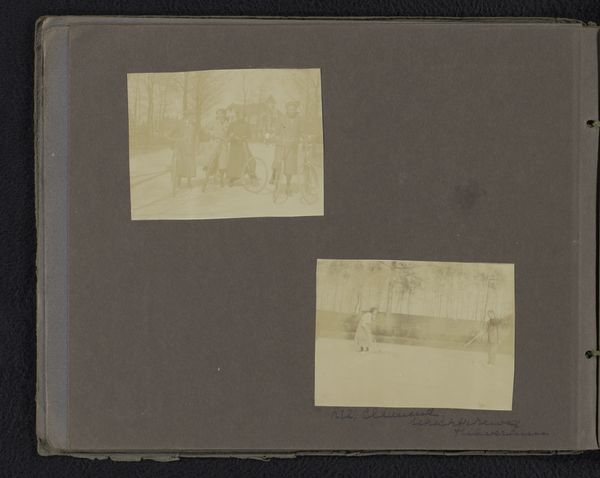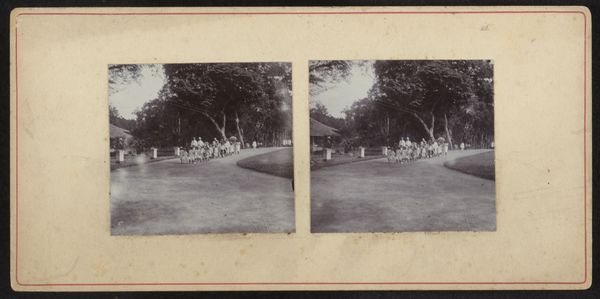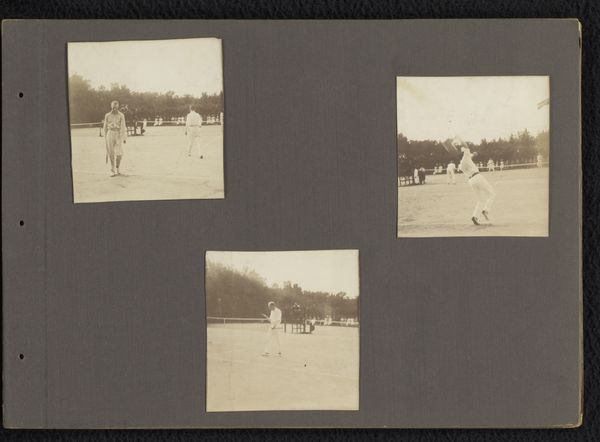
photography, gelatin-silver-print
#
portrait
#
landscape
#
photography
#
coloured pencil
#
group-portraits
#
gelatin-silver-print
#
modernism
Dimensions: height 60 mm, width 85 mm
Copyright: Rijks Museum: Open Domain
Curator: This gelatin silver print, "Marcheren in de Sneeuw" or "Marching in the Snow," was created anonymously between 1940 and 1943 and now resides here at the Rijksmuseum. It immediately strikes me as unsettling, somehow…stark, despite the ostensibly tranquil snowy landscape. Editor: Yes, the repetition is ominous. The receding line of figures—identical in dress and posture—create a powerful sense of regimentation and dehumanization, intensified by the cold, bleak winter setting. Considering its date, do you see a possible connection to the rise of authoritarian regimes during World War II? Curator: Precisely! The very composition drives home that unease; notice the calculated arrangement of the marching figures relative to the stark background of bare trees and muted skies. There’s a compelling contrast between the dark uniforms and the white snow which contributes to its rather disturbing atmosphere. Editor: It also speaks to the period's fraught political atmosphere and the individuals swept up in ideological movements beyond their control. There’s almost no room for individuality here. How interesting that the artist has chosen to remain anonymous. What effect might this silence have in adding to the existing narrative? Curator: It heightens the photograph's enigmatic quality, I think. By not identifying themself, the artist shifts our attention away from individual agency and instead emphasizes the collective experience, making the statement about obedience and the potential for control. Note, also, the silver gelatin print enhances the photograph’s texture—each grain seems to emphasize the grimness of the scene. Editor: Ultimately, this seemingly simple image resonates with complexity when considered alongside the events and atmosphere of its time. It shows how artistic intention shapes meaning far beyond simple representation. Curator: Yes, and I see a powerful visual exploration of form, rhythm, and material meeting sociopolitical contexts to produce art that disturbs as much as it informs.
Comments
No comments
Be the first to comment and join the conversation on the ultimate creative platform.
